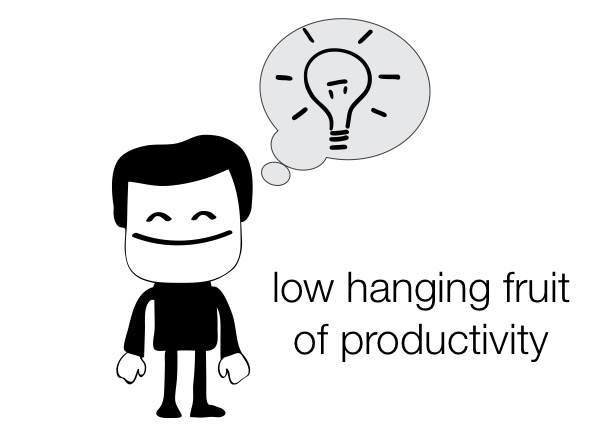You can’t beat low-hanging fruit when it comes to business. It refers to any kind of gain that’s easy to come by and which can be tackled with little effort.
So, what if we applied that to productivity? Is there such a thing as low-hanging fruit for getting stuff done?
The answer to this is a bit ‘sit on the fence’, to be honest, because it really depends on a few factors.
For instance, if you’re just starting out and looking for way to improve your productivity, you will find some low-hanging fruit. However, if you’re already pretty advanced when it comes to productivity, any remaining low-hanging fruit is likely to be slim pickings.
This is why, in this post, we’ll be focusing on tips for productivity beginners.
Start by planning ahead
One of the simplest things you can do in order to become more productive is begin planning ahead.
What do you want to achieve next week, next month and next year? Pick a few small and large goals and just note them down.
Having this stuff planned in a diary or simple notebook is a big step forward, because it suddenly becomes tangible, rather than rolling aimlessly around in your head.
Use a to-do list
An old-fashioned tip? Not at all! To-do lists are just as relevant now as they have been for decades.
We can link this piece of low-hanging fruit to the one above. When you begin planning ahead, it pays to have a to-do list by your side, because you’ll be able to add the individual tasks in a structured fashion.
The key lies in creating a to-do list that is realistic and which only contains the things you know you can do each day.
Try out the Pomodoro technique
The Pomodoro technique is masterfully simple. All it asks is that you break up your working day into twenty-five-minute intervals, interspersed with fifteen-minute breaks.
That’s it! Minimum investment is required to make this work for you, and it can quickly lend itself to tangible improvements in productivity.
Remember the 80/20 rule
This is another very simple productivity technique anyone can learn and use.
It works on the principle that you can divide your tasks into the top, most important stuff (the 20%) and the bottom, less important things (the remaining 80%).
Brian Tracy offers a brilliant, detailed explanation on the 80/20 rule for a number of scenarios.
Measure – constantly
The most productive people are those who continually measure their efforts.
You don’t have to go mad with this, either. When you’re just starting to figure out your level of productivity, measure the time you spend on everything you do. Then, work out what’s important and what could be defined as procrastination.
After a while, you’ll start to find out where you’re investing most of your time and where you can grab time back from the less important tasks.
Be honest about your social media use
This could be a tricky one if you’re a Facebook addict, but productivity is easily damaged by countless hours spent on social media.
In fact, it’s one of the biggest productivity killers, therefore if you have a sneaking suspicion you’re spending longer on those platforms than you should, or you’re doing so during hours when you should be working, it might be time to quit.
Quitting social media isn’t easy, but it can be pretty revelatory from a productivity point of view. So, why not give it a go?
Wrapping up
It’s worth reiterating that the above represent some of the most common, easy to adopt productivity techniques.
I’m confident they’ll yield considerable results for you with little effort when it comes to implementing them day-to-day.

